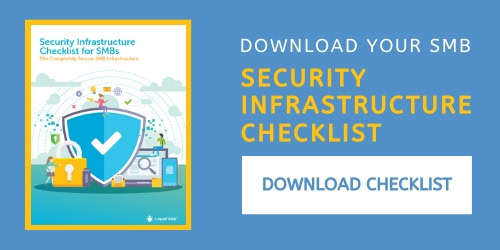Virtualization as a concept is experiencing more utility in recent times due to its ability to offer improved efficiency and scalability while reducing costs. Over 90% of businesses use server virtualization, and more organizations have begun exploring other types of virtualization, including desktop, application, and storage virtualization.
However, this increased adoption of virtualization has also led to increased concerns about the security risks associated with virtualization.
Is Virtualization a Security Risk?
Virtualization has some clear security advantages when compared to traditional server infrastructure. These advantages include the improved availability that comes with virtual machines (VMs), the isolation of these VMs from the operating systems and physical hardware they run on, and the enhanced security tools that come with most virtualization solutions.
However, this improved security posture doesn’t mean that virtualization has no security risks. The fact that many businesses employ this technology makes it a valid target for hackers and other malicious actors.
It’s safe to say that virtualization is no more (or less) of a security risk than other parts of your information technology infrastructure, and with increased adoption comes the need for awareness of the potential issues that IT administrators may face.
8 Virtualization Security Issues and Risks
1. VM Sprawl
Virtual machine sprawl is the uncontrolled spread of VMs created for specific workloads and then abandoned after serving their purpose. This unchecked proliferation can lead to VMs with sensitive information being compromised because they are not being actively managed and updated.
2. Malware & Ransomware Attacks
Virtual machines are also susceptible to viruses, malware, and ransomware attacks. These attacks can come from infected VM images or from users without proper security training. Once a VM is infected, it can spread malware across the entire virtual infrastructure without adequate isolation and security controls.
3. Network Configuration
There is a lot of work involved in managing multiple virtual machines, even with a VM management solution like VMware vSphere. Making poor configuration choices, like allowing file sharing between VMs, or leaving unused firewall ports open could be all that’s needed for a hacker to gain access to your virtual infrastructure. This misconfiguration can also include the physical servers, which can become a security risk without the latest security patches and firmware.
4. Access Controls
An attacker gaining access to your virtual infrastructure, whether via physically accessing host servers or via a compromised user account on your management platform, can cause a lot of damage to your systems.
5. Security of Offline Virtual Machines
Offline or offsite backups are an essential part of disaster recovery planning. However, any VMs you back up offline are stuck with their security updates and configurations from when they were last online. This lack of updates will make such a VM a security risk to the rest of your virtual environment when it is time to come back online.
6. Workloads with Different Trust Levels
Without proper security controls, it’s easy to create a test server that should be in a low trust zone, on the same physical hardware as a live production server with sensitive information that requires a high trust zone.
7. Hypervisor Security Controls
The hypervisor is the platform that makes it possible to run virtual machines. Therefore, it can become a single point of failure for your entire virtual infrastructure without proper security measures to mitigate the risk of attacks.
8. Cloud Service Provider APIs
For organizations that run a hybrid implementation involving public and private cloud infrastructure, intrusion attempts via APIs from your cloud service providers are a potential risk. These APIs are meant for effective communication between your virtual environment and the cloud-hosted one, and if they are not adequately secured, a data breach may occur.
Virtualization Security Best Practices
Now that we’ve outlined the potential risks that come with virtualization, it’s time we cover the ways to mitigate these risks effectively. Here are some steps you can take to reduce your exposure to the security risks outlined above:
- Create policies and procedures to govern the management of virtual machines throughout their lifecycle, from creation to deletion. You can use a cybersecurity framework as a guideline for these policies, but they must be adapted to suit your organization’s unique needs.
- Be sure to enforce the encryption of all offline VM images and backups to protect the confidentiality of the information stored on them and the integrity of the images.
- Implement access control systems for the physical environment where you host your infrastructure and the hypervisor/VM management platform. Only administrators and authorized users should have access.
- Use a VM management solution, like VMware vSphere. These tools can effectively maintain your entire virtual infrastructure to ensure proper resource allocation for VMs, and automated installation of security patches and updates.
- Implement a monitoring and logging system for all network traffic and VM operations and regularly audit these logs to identify trends that may point to a breach.
- If your virtual environment involves an external cloud services provider (CSP), ensure that your connection to CSP services is encrypted and uses a private channel separate from regular Internet traffic.
Liquid Web Can Help With Virtualization Security
The apparent advantages of virtualization make it a no-brainer for organizations looking to maximize their productivity. However, rushing headfirst into it without the necessary security to manage the associated risks can cause just as many problems as the benefits you’re looking to enjoy.

 Marho Atumu
Marho Atumu